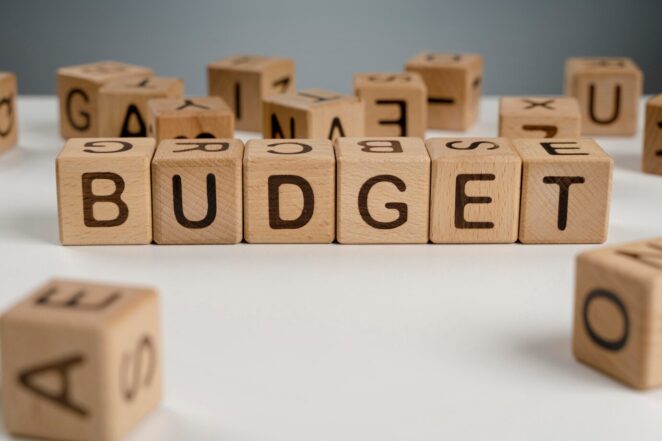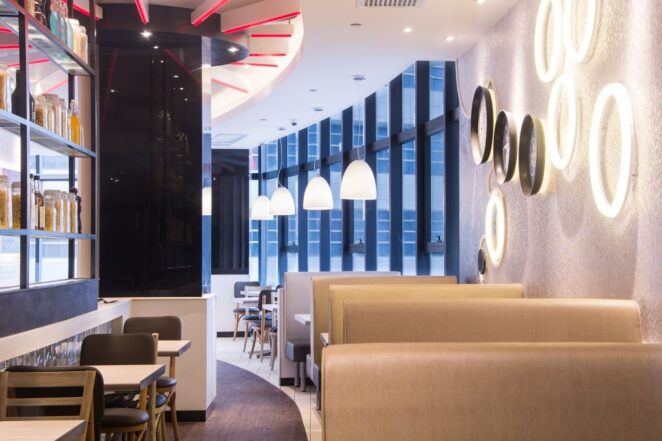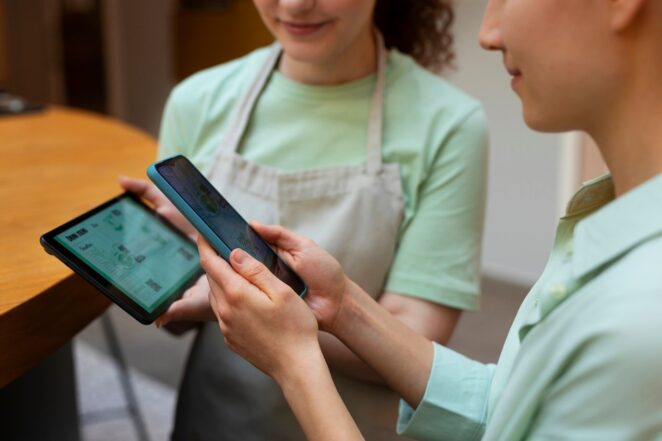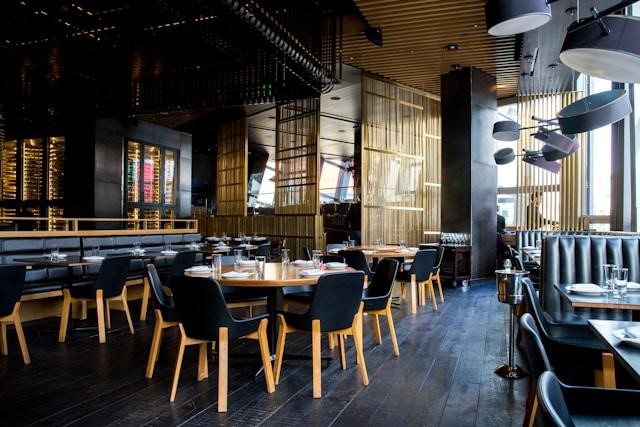Opening a restaurant is a dream for many, but turning that dream into a successful reality requires meticulous planning and execution, especially when it comes to the fit-out.
A restaurant fit-out involves more than just aesthetic appeal; it encompasses functionality, efficiency, and compliance with local regulations. Here are some key considerations for a successful restaurant fit-out.
Understanding the Concept
The first step in a successful restaurant fit-out is having a clear understanding of your restaurant’s concept. Whether you’re aiming for a cozy café, a fine dining establishment, or a fast-casual eatery, your fit-out should reflect your brand identity.
The design should create an atmosphere that enhances the dining experience and aligns with the restaurant’s theme. This includes everything from the color scheme and furniture to the lighting and decor. Establishing a strong concept not only attracts the right clientele but also sets the tone for the entire dining experience.
Budget Planning

Budgeting is a critical aspect of the restaurant fit-out process. It’s essential to have a detailed budget that accounts for all potential expenses, including construction, equipment, furnishings, and decor. Working with a professional company can help you create a realistic budget and avoid unexpected costs.
They can provide insights into where to allocate funds effectively, ensuring you get the best value for your investment. Additionally, a well-planned budget ensures that you can maintain financial stability while achieving the desired aesthetic and functional quality.
Space Utilization
Efficient space utilization is crucial in a restaurant fit-out. The layout should optimize the flow of customers and staff, ensuring a smooth operation. Consider the placement of the kitchen, dining area, and restrooms.
The kitchen should be designed for efficiency, with easy access to all necessary equipment and sufficient storage space. The dining area should be comfortable and inviting, with enough space for customers to move around without feeling cramped.
Proper space planning ensures that every square foot is used effectively, enhancing both customer satisfaction and operational efficiency.
Compliance with Regulations

Compliance with local health and safety regulations is non-negotiable in a restaurant fit-out. This includes ensuring that the kitchen and food preparation areas meet hygiene standards, the dining area complies with fire safety regulations, and the entire establishment is accessible to people with disabilities.
Working with experienced professionals can ensure that your restaurant meets all necessary regulations, avoiding costly fines and potential closures. Staying compliant not only ensures the safety of your patrons and staff but also enhances your reputation as a responsible business owner.
Selecting the Right Materials
The materials you choose for your restaurant fit-out can significantly impact its durability, maintenance, and overall aesthetic. Opt for materials that are easy to clean, durable, and resistant to wear and tear.
For instance, stainless steel is a popular choice for kitchen surfaces due to its durability and ease of maintenance. In the dining area, consider materials that complement the overall design while being practical for a high-traffic environment. Choosing the right materials can greatly affect the longevity and appearance of your restaurant, influencing customer perceptions and the frequency of maintenance required.
Lighting and Ambiance

Lighting plays a crucial role in setting the mood of your restaurant. The lighting should be functional yet create an inviting atmosphere. Natural light can enhance the dining experience, so consider large windows or skylights if possible.
In the evening, adjustable lighting can help create a cozy and intimate ambiance. Working with a specialist can help you choose the right lighting solutions that match your restaurant’s concept and enhance the overall customer experience.
Furniture and Fixtures
The choice of furniture and fixtures is another critical element in a restaurant fit-out. The furniture should be comfortable, durable, and align with the restaurant’s theme. Consider the arrangement and spacing to ensure a comfortable dining experience for customers and efficient movement for staff.
High-quality fixtures, such as faucets, lighting, and signage, also contribute to the overall aesthetic and functionality of the space. It’s important to select furniture that not only looks good but also withstands the demands of a busy restaurant environment.
Technology Integration

In today’s digital age, integrating technology into your restaurant fit-out can enhance operational efficiency and customer satisfaction. This includes installing a robust point-of-sale (POS) system, integrating online reservation systems, and providing free Wi-Fi for customers.
Consider incorporating digital menus or ordering kiosks to streamline the dining experience. Partnering with a company experienced in technology integration can ensure that your restaurant is equipped with the latest innovations.
Project Management
Effective project management is essential for a successful restaurant fit-out. This involves coordinating various aspects of the project, from design and construction to installation and final inspections.
Hiring a professional company ensures that the project is managed efficiently, stays on schedule, and meets all quality standards. They can handle the complexities of the fit-out process, allowing you to focus on other critical aspects of opening your restaurant.
Enhancing Customer Experience

A critical element often overlooked in restaurant fit-outs is the focus on enhancing customer experience. Every aspect of the restaurant’s interior should be designed with the customer in mind, from the comfort of seating to the acoustics of the dining area.
Thoughtful touches like ergonomic furniture, sound-absorbing materials to reduce noise levels, and visually appealing artwork can significantly enhance the dining experience. Furthermore, consider the customer’s journey from the moment they enter the restaurant to when they leave.
This includes clear signage, a welcoming entrance, and a thoughtful layout that naturally guides them through the space. Creating an unforgettable customer experience is key to increasing customer loyalty and word-of-mouth referrals, which are invaluable for any restaurant.
Marketing and Branding
Marketing and branding should be integral to the fit-out process. The physical environment of your restaurant should reinforce your brand message and resonate with your target audience. Use elements like branded signage, unique decor themes, and consistent color schemes throughout your space to strengthen your brand identity.
Additionally, the design should be photogenic and appealing for social media, encouraging patrons to share their experience online, which can be a powerful marketing tool. Integrating branding smoothly into the design not only elevates the aesthetic appeal but also ensures that the restaurant’s brand is memorable and distinctive.
Conclusion
A successful restaurant fit-out requires careful planning, attention to detail, and professional expertise. By considering factors such as concept alignment, budget planning, space utilization, regulatory compliance, material selection, lighting, furniture, technology integration, and project management, you can create a restaurant that not only looks great but also operates efficiently and delivers an exceptional dining experience.




